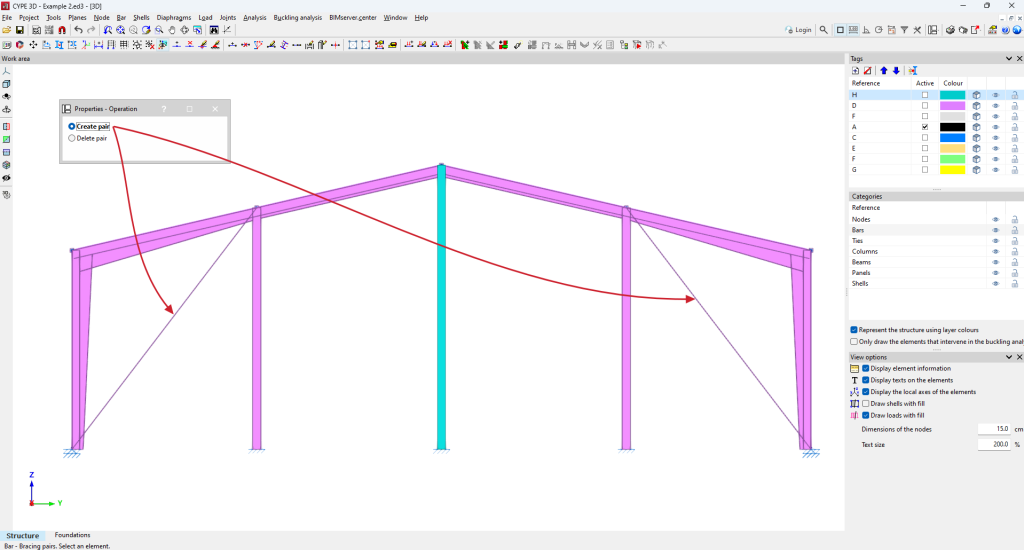In version 2025.c of CYPE 3D, a new tool is implemented that allows users to define bracing pairs for buckling analysis.
The linear buckling analysis is carried out for each combination by eliminating the non-linear elements that are not involved and transforming those that are involved into equivalent linear elements. In this process, when two bars with "Only tension" behaviour form a braced frame and both bars are compressed in the same load case, the program transforms the behaviour of these bars to linear and reduces their axial stiffness by half. In situations where a portal frame is braced by two non-intersecting braces if both are compressed in a load case, the program deletes them before carrying out the buckling analysis, so the results of the buckling analysis are obtained without considering these bars in tension.
From version 2025.c, with this new tool, bracing pairs can be defined. If both bars in tension in a pair are compressed in a load case, they will be retained in the buckling analysis, reducing their axial stiffness by half, similar to the way the program does it automatically for bars in tension forming a braced frame.


